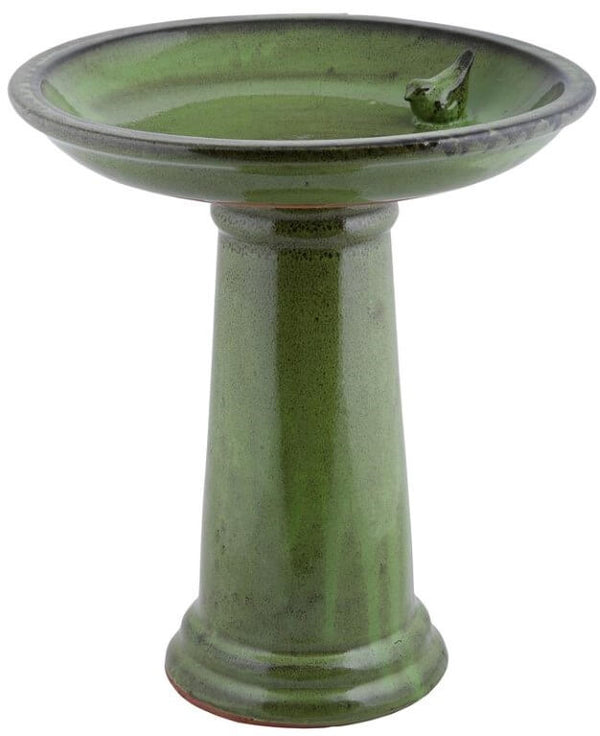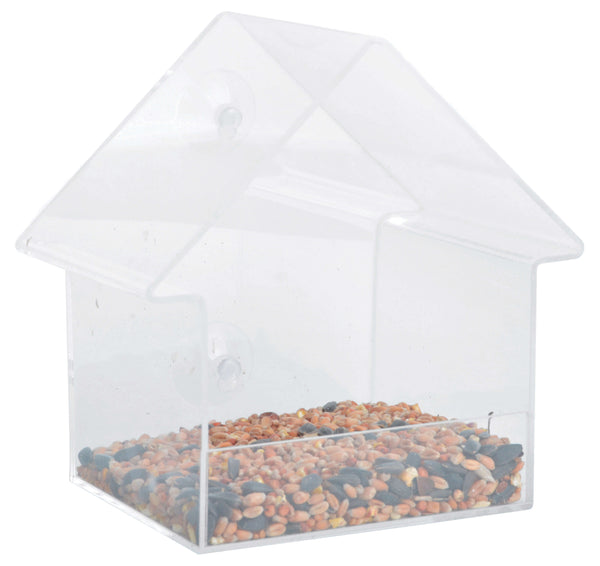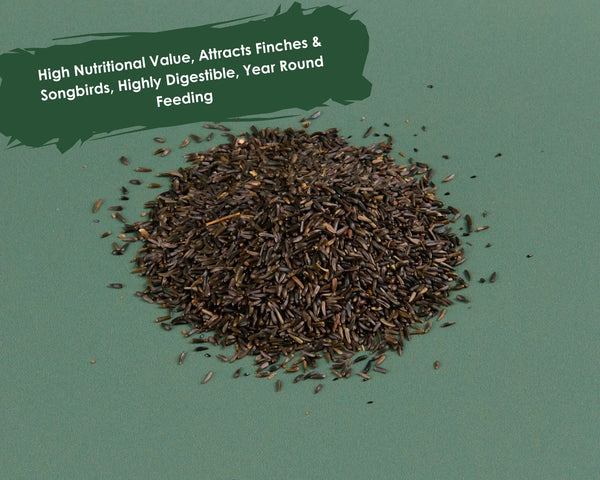Rare British Garden Birds: A Glimpse into Nature's Hidden Gems
In the enchanting world of British gardens, where the rustle of leaves and the gentle hum of bees form the backdrop of everyday life, there exists a treasure trove of avian wonders waiting to be discovered. Beyond your Robin Red Breast and common Pigeon hides a world of wonderful and unusual birds that you won't see every day of the week.
While the melodious chorus of common garden birds is a familiar and comforting soundtrack, there are hidden gems among the branches – rare, elusive, and truly captivating species that grace our gardens infrequently, like fleeting guests at an exclusive gathering.
In this exploration of "Rare British Garden Birds," we embark on a journey beyond the ordinary, into the realm of avian wonders that often escape our notice. These birds are like nature's best-kept secrets, revealing themselves to those with a discerning eye and a passion for the feathered inhabitants of our green sanctuaries.
Join us as we unveil the fascinating stories, intricate plumage, and unique behaviours of these rare visitors, some of which are endangered wild birds. Discover the secrets to attracting them to your own garden, and learn how to create a haven for the elusive creatures that add a touch of magic to the British countryside. Whether you're an avid birder or simply someone who appreciates the beauty of the natural world, this exploration of rare British garden birds promises to delight and inspire.
So, grab your binoculars, don your gardening gloves, and let's embark on a journey to uncover the hidden treasures that await just beyond your garden gate.
Hawfinch (Coccothraustes coccothraustes):
Description: Hawfinches are relatively large birds with a stocky build. They have a striking appearance with a thick, powerful beak that is adapted for cracking open hard seeds. Their plumage is typically brown feathers with a hint of green, and they have a white belly.
-
Habitat: Hawfinches can be found in woodlands, parks, and gardens with mature trees, where they can forage for seeds and fruits.
-
Behaviour: These birds are usually secretive and can be difficult to spot. They are known for their distinctive call, which is a sharp "tick" or "click." They often feed on the ground beneath trees and shrubs.

Firecrest (Regulus ignicapilla):
-
Description: Firecrests are tiny birds, even smaller than the common goldcrest. They have bright green plumage with a striking crown stripe that is usually orange or yellow, giving them their name.
-
Habitat: Firecrests are primarily found in coniferous and broadleaf woodlands, especially in southern and southeastern parts of the UK. They are known for their agile foraging in tree canopies.
-
Behaviour: These birds are very active and constantly in motion as they search for insects and spiders in foliage. Their high-pitched calls and vibrant plumage make them an exciting find for birdwatchers.

Dartford Warbler (Sylvia undata):
-
Description: Dartford warblers are small, slender birds with distinctive reddish-brown plumage and strikingly red eyes. They have a long tail and are known for their cryptic appearance.
-
Habitat: Dartford warblers are mostly found in gorse and heathland habitats, particularly in southern England and Wales. They are well adapted to these shrubby, spiky environments.
-
Behaviour: These warblers are often heard before they are seen, as they have a melodious song. They feed on insects and spiders and are known for their agile movements among dense vegetation.

Goshawk (Accipiter gentilis):
-
Description: Goshawks are large birds of prey with broad wings and long tails. They have slate-gray to bluish-gray plumage and striking bright red eyes.
-
Habitat: Goshawks are typically found in woodland habitats, including coniferous and mixed woodlands. They can be secretive and are known for their stealthy hunting behavior.
-
Behaviour: Goshawks are powerful hunters that primarily prey on birds and mammals. While they are not commonly seen in gardens, they may visit if there is suitable prey available.

Yellow Wagtail (Motacilla flava):
-
Description: Yellow wagtails are small, slender birds with bright yellow plumage, a white belly, and distinctive dark markings on their heads.
-
Habitat: These birds are often found near wetlands, farmlands, and open grassy areas. During migration, they can occasionally be seen in gardens, especially in the spring and fall.
-
Behaviour: Yellow wagtails are known for their lively, bobbing tail movement. They feed primarily on insects and can be quite active as they forage for food. Their bright yellow plumage makes them stand out in the countryside.

Spotted Flycatcher (Muscicapa striata):
-
Description: Spotted flycatchers are small, unassuming birds with brownish-gray plumage and a subtle spotted pattern on their throat and breast. They have a distinctively upright posture.
-
Habitat: These birds are often found in gardens, woodlands, and parks, where they perch on branches, fences, or other elevated spots to catch flying insects.
-
Behaviour: Spotted flycatchers are agile aerial hunters. They wait on their perches and dart out to catch flying insects, such as flies and midges, before returning to their perch. Their soft, "whit" or "weet" calls are characteristic.

Lesser Redpoll (Acanthis cabaret):
-
Description: Lesser redpolls are small finches with brownish-gray plumage and a distinctive red forehead patch. They also have streaked flanks and a forked tail.
-
Habitat: While they are often found in woodlands and heathlands, lesser redpolls can sometimes visit gardens, especially in winter when they are attracted to bird feeders.
-
Behaviour: These finches are social birds and often forage in small flocks. They feed on bird seeds and can be enticed to garden feeders with nyjer (niger) seeds.

Siskin (Spinus spinus):
-
Description: Siskins are small finches with greenish-yellow plumage, black wing feathers, and distinctive black streaking on their sides. Males have a black cap.
-
Habitat: Siskins are commonly found in woodlands, especially coniferous forests. They can also be attracted to gardens with suitable food sources like nyjer seeds.
-
Behaviour: These birds are highly acrobatic and can hang upside down while feeding. They have a musical and twittering song. Siskins are primarily seed-eaters, especially favouring small seeds like those from conifers and nyjer.

Black Redstart (Phoenicurus ochruros):
-
Description: Black redstarts are small birds with predominantly black plumage and striking orange-red patches on their tails and vent. They are known for their striking appearance.
-
Habitat: These birds are often found in urban or industrial areas, especially where there are buildings with suitable crevices for nesting.
-
Behaviour: Black redstarts are insectivorous birds that can be seen darting around buildings and searching for insects. They have a high-pitched, metallic song and are known for their adaptability to urban environments.

Pied Flycatcher (Ficedula hypoleuca):
-
Description: Pied flycatchers are small birds with a bold black-and-white plumage pattern. Males have a black cap on their heads.
-
Habitat: These birds are typically found in woodlands and forested areas, where they often nest in tree holes or nest boxes.
-
Behaviour: Pied flycatchers are known for their habit of nesting in tree holes, often taking over abandoned nest sites. They feed on insects, catching them on the wing during their aerial forays.

Attracting rare birds to your garden can be a rewarding endeavour for birdwatchers and wildlife enthusiasts. While it's important to note that the presence of rare birds in your garden is not guaranteed, you can create a welcoming habitat that increases the chances of attracting them. Here are some tips to attract rare birds to your garden:
Provide Suitable Habitat:
-
Research the specific habitat preferences of the rare birds you hope to attract. Make sure your garden has the necessary elements, such as trees, shrubs, and open spaces, to mimic their natural habitats.
Offer Food Sources:
-
Plant a variety of native trees and shrubs that produce berries, seeds, and fruits that these birds feed on.
-
Use bird feeders with appropriate food. Different species have different dietary preferences. For example, niger seeds may attract siskins, while sunflower seeds can attract a variety of birds.
-
Consider planting nectar-rich flowers to attract insects, which can in turn attract insect-eating birds like flycatchers.
Provide Water:
-
Install a bird bath or small pond with fresh water for drinking and bathing. Clean and refill it regularly to ensure it stays attractive to birds.
Offer Nesting Sites:
-
Install nest boxes or birdhouses suitable for the target bird species. Research the specific requirements for each species to ensure the nest boxes are appropriately designed and placed.
Create Shelter and Perches:
-
Plant a mix of tall and low shrubs and trees to provide shelter from predators and harsh weather conditions.
-
Add perches like dead branches or posts, which can give birds a place to rest and survey their surroundings.
Minimize Disturbances:
-
Minimize human disturbances in your garden, especially during the breeding season. Avoid excessive noise and movement around areas where birds may nest.
Keep It Natural:
-
Maintain a natural and organic garden by avoiding pesticides and herbicides that can harm birds and their food sources.
Patience and Observation:
-
Rare birds may not appear immediately. Keep a watchful eye and be patient, as they may visit your garden sporadically or during specific seasons.
Record and Share Sightings:
-
If you are fortunate enough to spot a rare bird in your garden, document the sighting and share it with local birdwatching groups or online platforms dedicated to birding. This information can be valuable for conservation efforts.
Remember that the availability of rare birds in your garden depends on factors like your location, habitat, and the specific preferences of the bird species. Creating a bird-friendly garden can not only attract rare birds but also provide a haven for a variety of other British bird species, contributing to local biodiversity.










